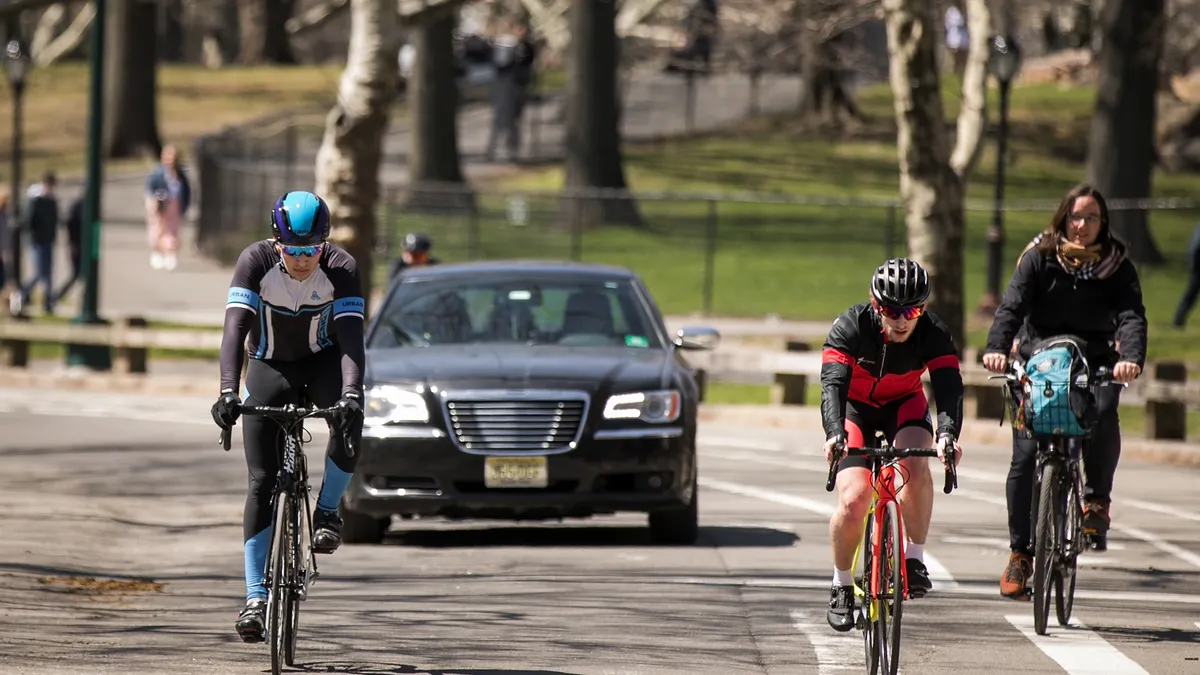During the Washington Region Vision Zero Summit in September hosted by the Washington Area Bicyclist Association, Vision Zero Network Program Manager Tiffany Smith offered pointers for cities wanting to incorporate the network’s Vision Zero approach in their applications for competitive grants under the Infrastructure Investment and Jobs Act.
Cities across the country are adopting Vision Zero, a nontraditional communitywide approach to ending — or at least reducing — traffic casualties. The program emphasizes a multipronged approach that starts with design and policy rather than the traditional education, enforcement and engineering emphases. It stresses protecting vulnerable road users such as pedestrians or cyclists as well as drivers and passengers.
One program the IIJA funded, the Safe Streets and Roads for All grant program, provides up to $1 billion annually to reduce roadway casualties. “This is the time to go ahead and try things you have never done before,” Smith said. Her pointers:
- Expect inevitable tragedies. Crashes will happen, so think not only about trying to prevent them but also about how to minimize harm when they occur. “People will make mistakes. Design for them,” Smith said. If you control speeds at which vehicles travel, for instance, people are less likely to get seriously injured. Don't just reduce the speed limit; design streets for the lower limits using measures such as speed humps or bumps, pedestrian islands and painted crosswalks.
- Think proactively. Look for areas where problems are likely to occur, not just where they have occurred most recently or most often. These can include underserved areas and places with high concentrations of pedestrians and bicyclists. Identify vulnerable populations for specific interventions, such as neighborhoods populated with many children, immigrants, people with limited English proficiency or high poverty rates. For instance, when New York City found that senior citizens suffered a disproportionate share of traffic-related injuries, the city partnered with hospitals and senior centers to concentrate walking safety measures in areas they frequent and where they were most likely to get hurt.
- Don't rely solely on the data. Don’t assume a road is safe because the incident rate is low. “Maybe data show there is not a high rate [of collisions] in underserved areas, but maybe that is because people don't feel safe to be on the road,” Smith said.
- Don't forget your allies. Describe your plans for working with community groups in your funding applications, and maintain the partnerships you make when you plan. “There should be a long-term relationship,” Smith said.
Recent reports urge Vision Zero programs to work on reducing driver error and refocusing roadway design to make streets safer as U.S. traffic fatalities continue to grow. In August, the National Highway Traffic Safety Administration reported a year-over-year increase of about 7% in U.S. traffic-related deaths in the first quarter of 2022, from 8,935 victims to 9,560.
At the same time, the U.S. Department of Transportation last week issued a request for information on enhancing the safety of vulnerable road users at intersections. Noting that 1,674 pedestrians and 355 bicyclists were killed at crossings in 2020, USDOT is asking for data and suggestions about sensors, warning signals and other technologies to make it safer for walkers, bikers and scooter users to cross the street, as well as non-technological data and suggestions. It prefers to receive comments by Oct. 16.











